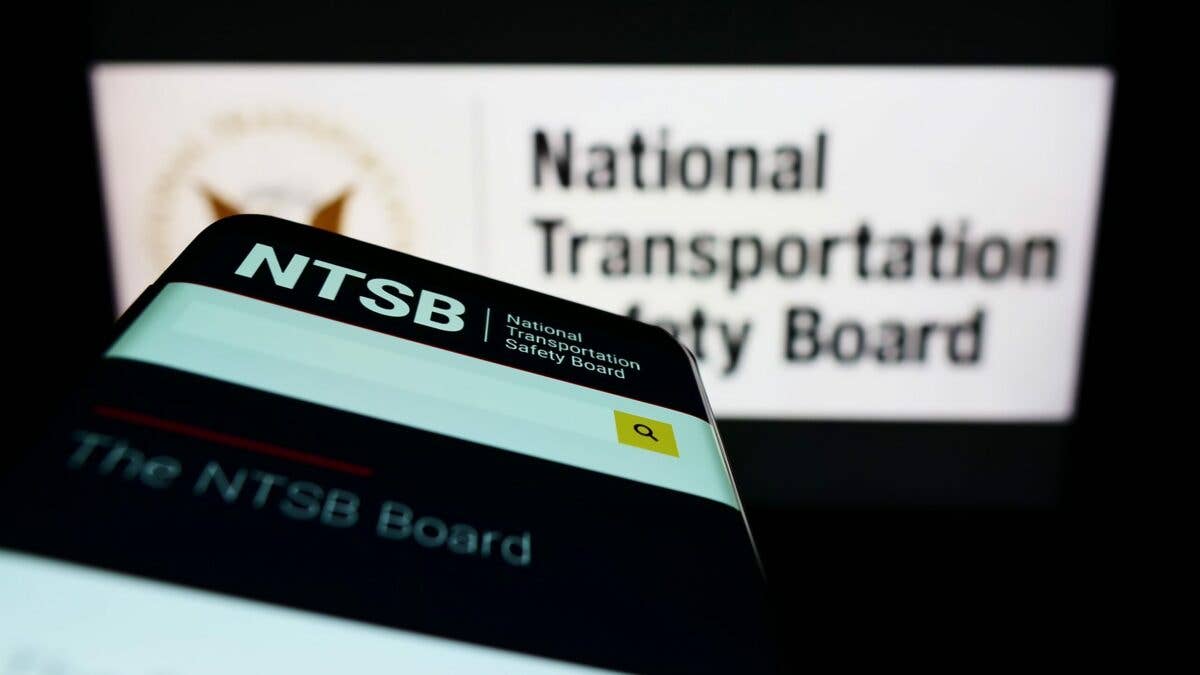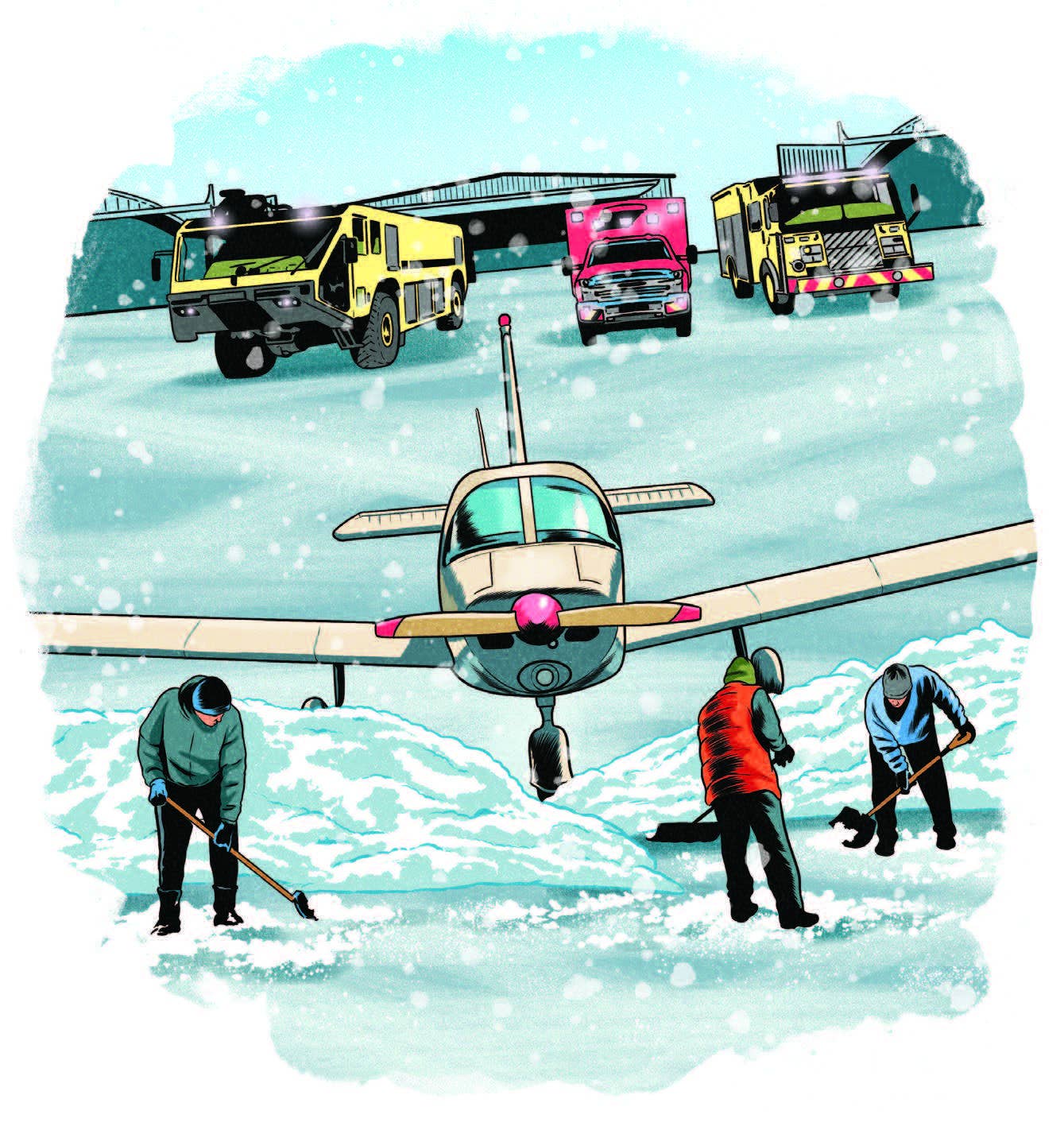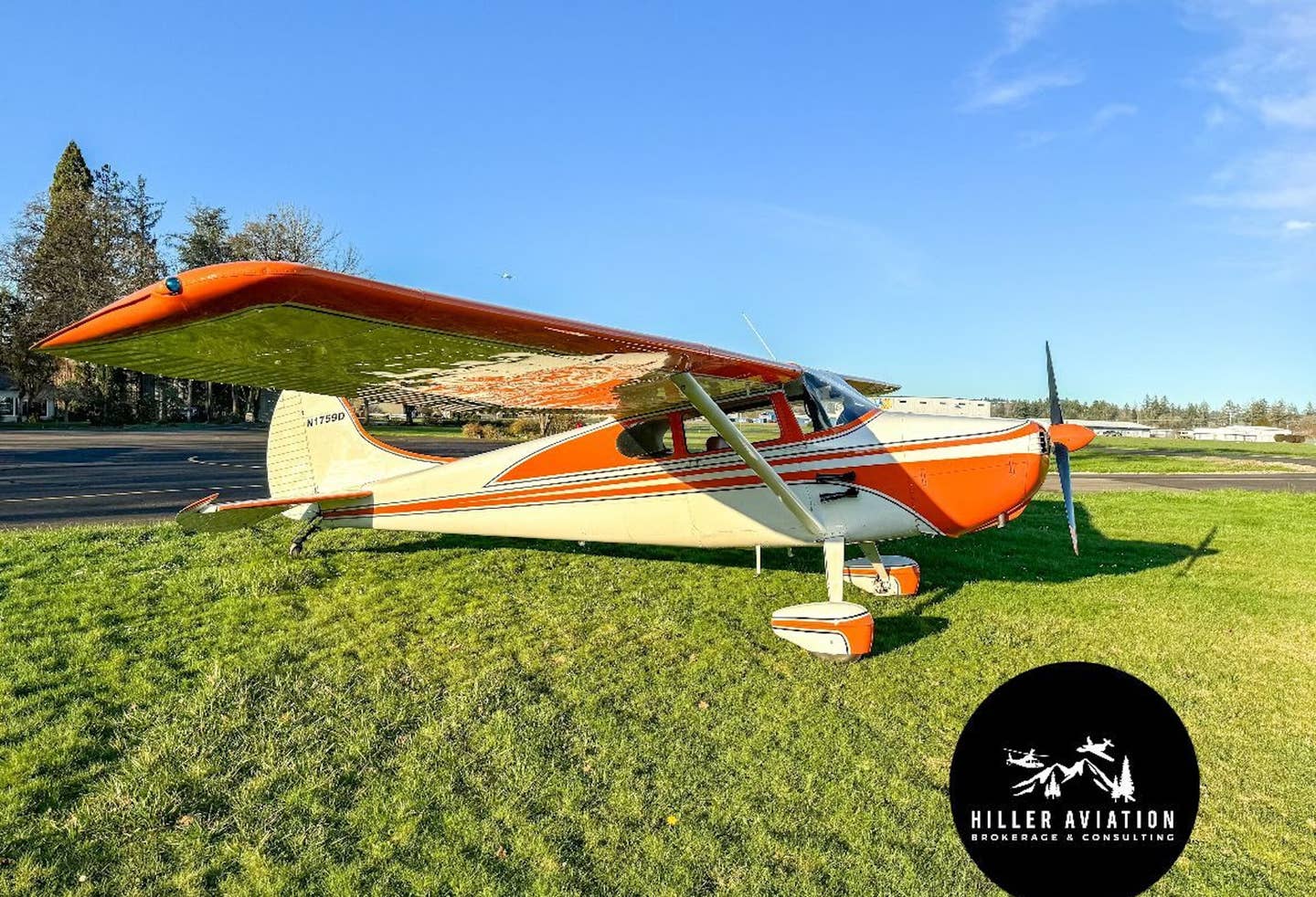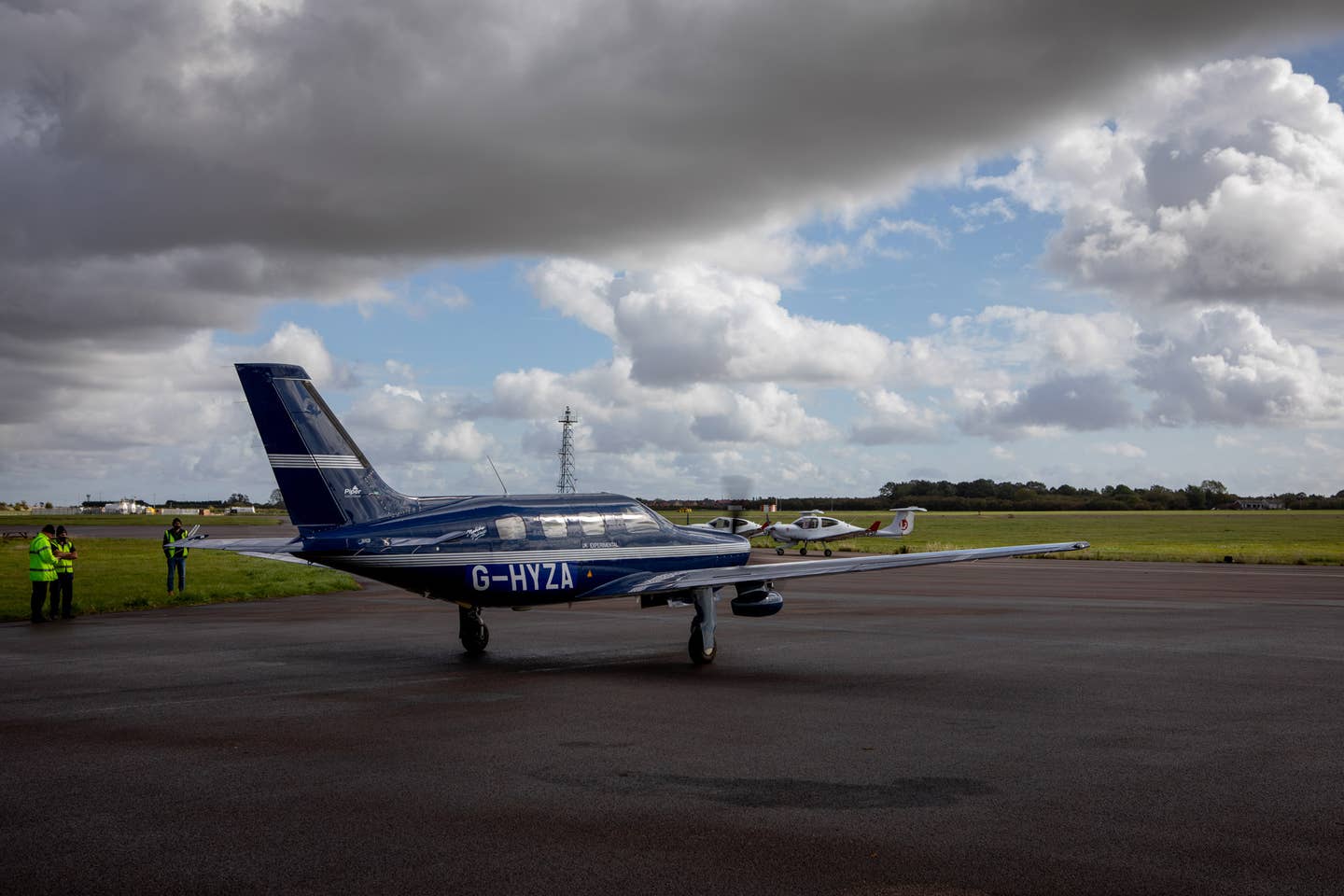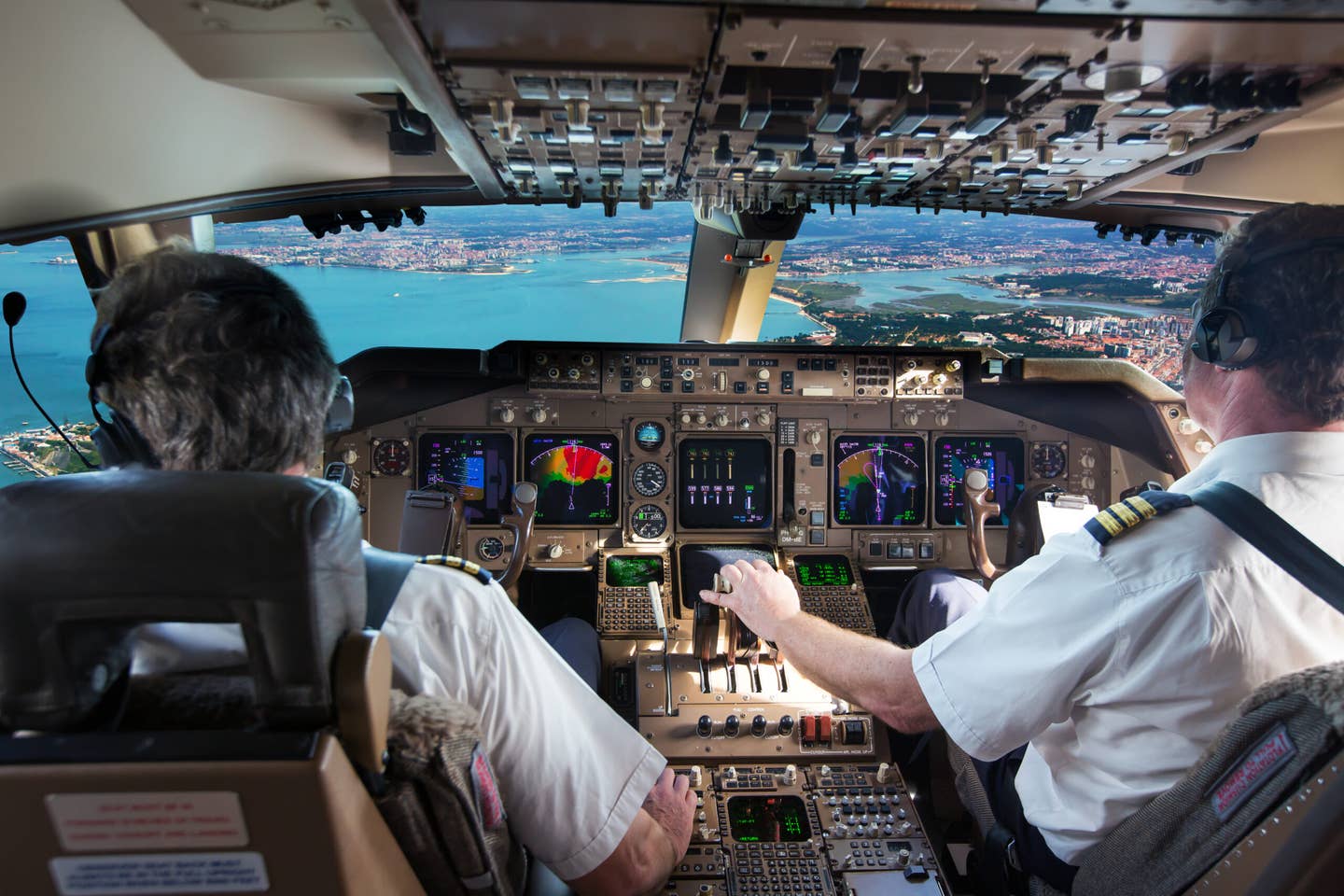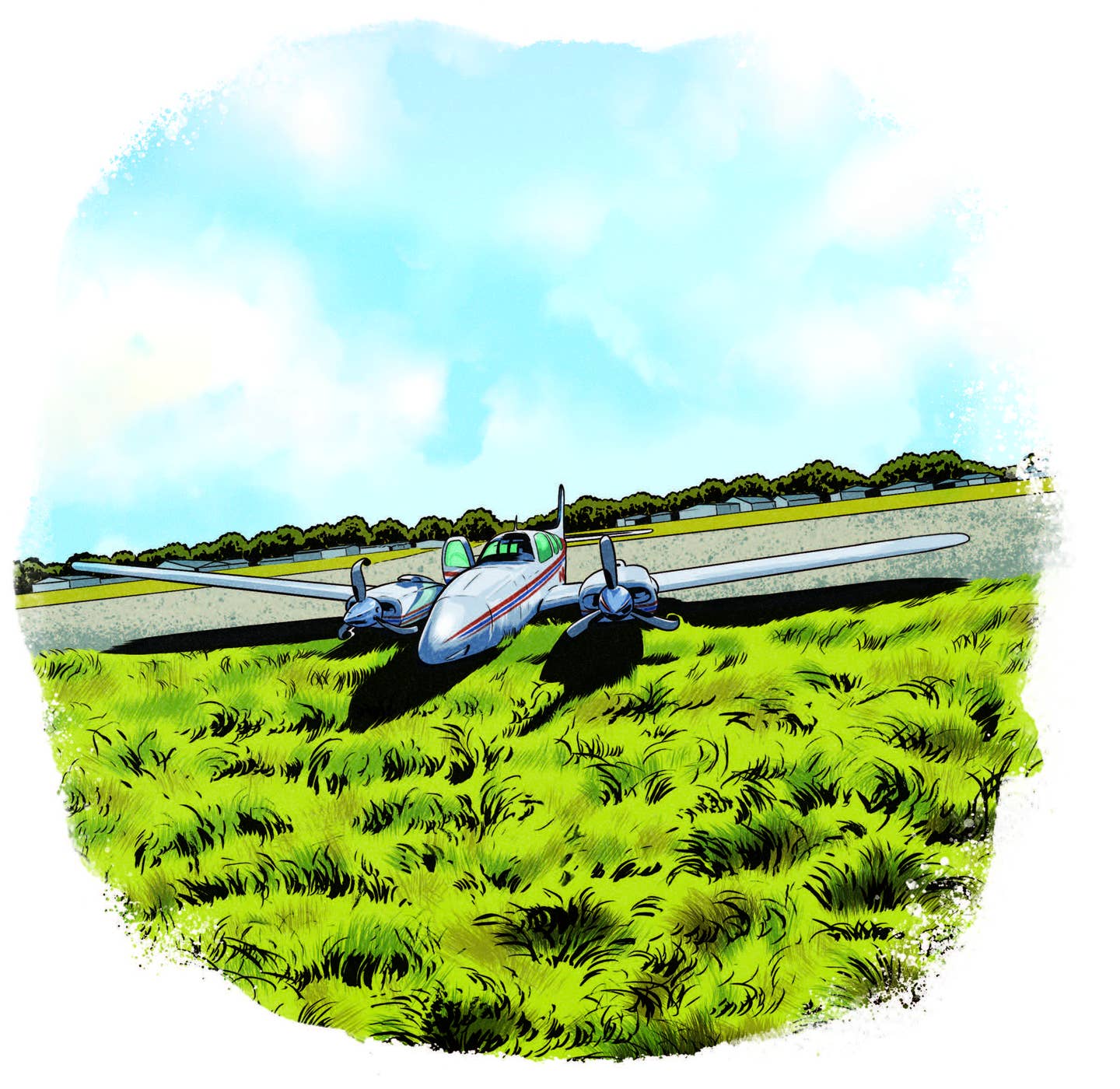Everyone Should Pay Close Attention in the Cockpit
There are lessons to be learned for GA passengers as well.

Even if you’re not a pilot, there’s a lot that life-loving riders should learn about flying. [Image: Joel Kimmel]
I’m no pilot, but I am part of the flying population that likely outnumbers pilots: the GA passenger. And there is a lot that we life-loving riders should learn about flying.
My dad and grandpa’s Cessna 172 Skyhawk XP, with its delightfully itchy sheepskin seats and the “Please step outside to smoke” sign on the dash, introduced me to aviation as a 7-year-old. I would practice ELT searches with my dad, organize Jeppesen charts, and try to read the instruments just like he would.
If you're not already a subscriber, what are you waiting for? Subscribe today to get the issue as soon as it is released in either Print or Digital formats.
Subscribe NowAnd being a kid in the ’80s, buzzing soccer games and friends’ houses only helped cement a love of aviation—and, as it turned out, adrenaline. I assumed that my dad’s skillful IFR landings and the rigor applied to his Civil Air Patrol work were the norm for pilots.
With grandpa’s passing, the C-172 went away. We didn’t have much extra money, so Saturday morning flights became a thing of the past. I grew up and eventually started a company and had some kids and raced some cars. I knew enough about being a pilot that I would not have the time to fly consistently and, therefore, I would not learn to fly well. As the company did better, I would dry lease or fly on fractionals to meetings and races. I wouldn’t think about the pilot we hired, the maintenance record of the airplane, or how young the pilot in command was. I was just excited to be in a small airplane again.
- READ MORE: Finding a Deer in the Headlights
The first lesson to pay attention came in the form of an early delivery Eclipse 500. I often dry leased a Malibu and hired a pilot (its owner). I enjoyed the steep approaches to Truckee, California (KTRK), and talking shop as I flew in the right seat with him. Each flight was an informal lesson. Soon, his Malibu went away, and a brand-new fast and high Eclipse 500 took its place. The idea of a very light jet (VLJ) was intoxicating. So much so that I never once questioned his ability to step up from the Malibu, nor did I question the sea of yellow “INOP” stickers that littered the panel of this dubiously certified little jet.
He and I were flying a short hop from McClellan Airfield (KMCC) in Sacramento, California, to the 3,300-foot strip at Gnoss Field (KDVO) in Marin County. Prior to takeoff, reports of fog made Gnoss a no-go, so we planned to fly an even shorter hop to Napa County (KAPC), which, it turns out, was also in the fog.
I sat in the right seat, and we talked about the new little jet’s systems. I admired the cockpit layout and the elegant sidestick jutting out from my right armrest. As we came in for the approach to Napa, there was thick fog for miles. I assumed it was a high layer and we’d punch right through just like dad used to. The pilot descended into the fog, and I did my job being a quiet passenger. In a slightly stressed tone, he asked if I could see the runway. Runway? We’re still way deep in the thick of the fog. And then there it was, still shrouded in fog, maybe 400 feet below and well to the right of us. I pointed it out as the numbers passed by us, and the airplane aggressively turned to line up with the still-shrouded runway. There was no way we were going to try to land, right?
Thankfully, the pilot chose to go around. We went around on a steep climb to the right. And that’s when I heard the stern voice of the ATC—who I would soon find out was sitting in the tower...to our right—tell us that the go-around was to the left, and it’s critical to know and follow go-around procedures. We climbed back out of the clouds, he lined it back up, and we tried it again. Nope. Then again.
The third time, it went worse. The runway was nowhere in sight. The pilot muttered something about how we need to be careful as there are antennas nearby. We finally see the ground, which I think was somewhere between Runways 18L and 6. He went around again...to the right. The controller was now aggressively chastising him on the radio when I realized that we were still low and still turning and now in a banked descent somewhere near the tower and Runway 6. I looked up (yes, up) through the windshield and saw an access road and grass at a very odd angle to the panel. We weren’t level nor straight. And there is a tower somewhere to our left.
I knew enough about flying that this is a view that not many see from the windscreen of a jet a couple of hundred feet off the ground and can talk about later. My confidence that the pilot was in control was near zero. I knew that we needed to level the wings and pull back ASAP. I had the clarity of mind (thanks be to evolution for situations such as these) to know that grabbing that elegant little sidestick would probably kill us. Or then again, maybe it would save us.
The cliches of time slowing down and life flashing before my eyes proved to be true. My fingers opened inches from the stick, and I looked left to the pilot’s hands to see if he was going to level us first. I would give him exactly one second before I’d yell, “My plane!” I know, this is a supremely dumb idea. My brain was very much in “don’t-die” mode. Thankfully, he didn’t freeze up. He flew the airplane out of the situation that he got us into.
We climbed out as the controller gathered himself and offered a different type of IFR approach. I didn’t understand this exchange. What are we using? To this day I have no idea how he was navigating. Whatever was offered by the concerned controller was declined.
We rose above the clouds and were silent. Neither of us wanted to talk about what had just happened, so I asked him to go back to McClellan.
“Can’t. Not enough fuel,” the pilot responded.
I asked if we could declare an emergency and land at Travis Air Force Base (KSUU). That runway has to be a mile wide and 3 miles long.
“No,” he said.
What? Why would we depart Sacramento and into Napa’s fog with a thimble full of jet fuel?
We had to go back in for another try. I was not excited about this, so I just shut my mouth and did my best to spot the runway. Due to the stress of the situation, I have little recollection of that landing other than the controller talking him through it and, in a wise act of self-preservation, reminding him that the go-around procedure is to the left.
I learned about flying from that. Know your pilot. That was the last day I ever flew with or talked to him. And I never received an invoice.
The next lesson about flying regarded the airplane, not the pilot. The pilot was new to me, and lessons learned, I asked many questions about him and those who knew and recommended him. He was an instructor, A&P mechanic, military, commercial, with tens of thousands of hours over the decades. This was no hobby; this was his career. However, the airplane he was going to fly was a recent JetProp-converted Malibu. All the pilots talked about how fast and fun it was to fly. The giant exhaust sticking out of the cowling and expansive glass cockpit won me over.
He flew me from Truckee to Bakersfield, California (KBFL), so I could test a race car at the track in nearby Buttonwillow. The flight down was fast and comfortable for a solo passenger. When the day at the track was done, I made my way back to Bakersfield and climbed into the JetProp. The pilot did his walk-arounds, safety checks, and used checklists. I like this guy. We took off into the moonless black night over central California and left the lights of Bakersfield behind. I was tired, so I sat in the rear-facing seat and kicked my legs up. I was looking at the scattered lights of a few farmhouses far below. It was dark. It seemed too dark. I then noticed that there were no lights on the wingtip.
That’s odd.
I looked over my shoulder to the pilot and saw no lights on the panel either. He was digging through his duffle, so I used my phone to light the cockpit. He grabbed a flashlight and a hand-held radio and visually swept the panel. A lone old-school artificial horizon was installed to the far right of the new glass panel. It was in the worst possible position for a single pilot in the left seat, flying on a moonless night over dark farmland.
The pilot calmly radioed an emergency and climbed higher to give us the best possible chances if the engine stopped turning. Unfortunately, the radio was low on batteries, so he could only make a short call before it died. He would leave it off for a bit and then turn it back on for a short transmission.
He continued to fly the airplane, scan the instruments with his flashlight, and try to restart the electrical system to no avail. He kept calm despite some (actually, a lot of) sweat. The emergency gear extension knob was used, and two clunks were heard—but not three. He turned the radio back on and requested a flyby to see if the nose gear was actually down. As he approached the tower, the emergency lights on the runway lit up the night as fire trucks and ambulances staged themselves along the taxiways.
The tower controllers apparently didn’t know where we were, and we flew right by in the dark and didn’t get a gear-down affirmation signal. I assumed radar would tell them where we were, but it didn’t seem like they were able to see us. The pilot kept scanning the panel, flying the airplane, and checking altitude to ensure that we were still within glide distance of the airport. As he flew the pattern it was eerily dark, so I stared at my phone and contemplated texting my wife.
He flew a perfect approach. As we descended over the sea of emergency lights, he held the airplane a few feet off the runway and landed long in order to bleed speed then gently set down on the mains. He then held the nosewheel up until he could gently set it down. Like butter. The gear held. I clearly had the right pilot for the situation. We taxied off the runway, and he shut down the engine on the taxiway—and it got very dark around us once again.
The downside to landing long is that no one saw us. The controllers would later share that they assumed we were down out in the dark desert. The runway was so long and wide, this tiny unlit airplane was easy to miss as it landed long right down the center while they were scanning the skies.
Someone radioed to the emergency crews that they thought they saw someone. All the emergency trucks started racing down the taxiways. The pilot yelled for the first time. “Get out of the airplane! They don’t see us!”
After all this, we were about to be run over by one or more well-meaning, 70,000-pound fire trucks. We ran from the airplane into the grass as their lights finally spotted our darkened plane, and they slammed on their brakes.
I rented a Nissan Sentra and drove the six hours home.
I had vetted the pilot but did not vet the airplane beyond admiring the panel and that sexy exhaust. A short had killed its generator, inverter, and battery. I should not have chosen to fly on a recently converted airplane until hundreds of flight hours had passed.
Passengers should educate themselves to vet both plane and pilot. The admiration and trust we have for both is well earned but should not be universally applied.
This column first appeared in the May 2024/Issue 948 of FLYING’s print edition.

Sign-up for newsletters & special offers!
Get the latest FLYING stories & special offers delivered directly to your inbox


